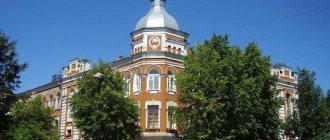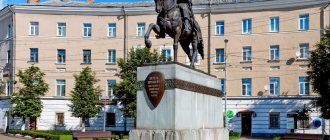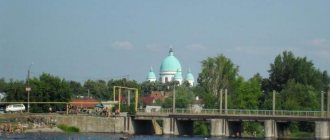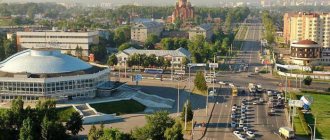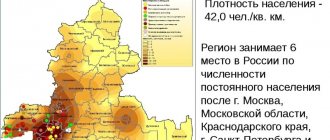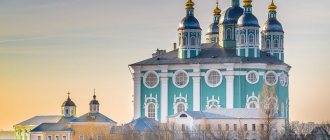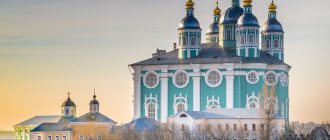What holiday is it today?
January 22, 2022, Saturday
Today are holidays, events: Day of Unification of Ukraine Tomorrow: Premiere of the opera “Eugene Onegin” at the Bolshoi Theater
Today is the Orthodox holiday: Martyr Polyeuctus. St. Philip, Metropolitan of Moscow and All Russia, wonderworker... Tomorrow: St. Gregory, Bishop of Nyssa. Venerable Markian the presbyter. Venerable Dometian, Bishop of Melitino. St. Paul of Komel, wonderworker, student of St. Sergius of Radonezh. Saint Theophan, the Recluse of Vyshensky...
Today is a national holiday: St. Philip's Day... Tomorrow: Gregory - Summer Guide...
Russian telephone codes
|
City codes of the Jewish Autonomous Region Telephone codes of cities of the Jewish Autonomous Region:
Birobidzhan city code 42622
Telephone codes of settlements in the Jewish Autonomous Region:
Telephone code Amurzet - 42665 Telephone code Aur - 42632 Telephone code Babstovo - 42663 Telephone code Bashmak - 42663 Telephone code Bashurovo - 42666 Telephone code Belgorodskoe - 42632 Telephone code Bijan - 42663 Telephone code Bira - 42666 Telephone code Birakan - 42666 Telephone code Birobidzhan - 42622 Telephone code Birofeld - 42622 Telephone code Blessed - 42665 Telephone code Budukan - 42666 Telephone code Valdheim - 42622 Telephone code Ventselevo - 42663 Telephone code Volochaevka 1 - 42632 Telephone code Voskresenovka - 42663 Telephone code Golovino - 42622 Telephone code Gornoe - 42663 Danilovka telephone code - 42632 Telephone code Dvurechye - 42666 Telephone code Dezhnevo - 42663 Telephone code Dobroye - 42665 Telephone code Dubovoe - 42622 Telephone code Ekaterino-Nikolskoye - 42665 Telephone code Zhelty Yar - 42622 Telephone code Zarechnoye - 42666 Telephone code Limestone - 42666 Telephone code Kalinino - 42663 Telephone Kamyshovka code - 42632 Telephone code Kvashnino - 42663 Telephone code Kirga - 42622 Telephone code Kirovo - 42663 Telephone code Klyuchoevoye - 42632 Telephone code Krasivoe - 42622 Telephone code Kukelevo - 42663 Telephone code Kuldur - 42666 Telephone code Lazarevo - 42663 Telephone code Leninskoye - 4 2663 Telephone code Londoko Poselok - 42666 Telephone code Londoko-Zavod - 42666 Telephone code Lugovoe - 42665 Telephone code Nagibovo - 42665 Telephone code Nadezhdinskoye - 42622 Telephone code Nayfeld - 42622 Telephone code Nizhne-Leninskoye - 42663 Telephone code Nikolaevka - 42632 Telephone code New - 42663 Telephone Novotroitskoye code - 42663 Telephone code Obluchye - 42666 Telephone code Ozernoye - 42665 Telephone code Oktyabrskoye - 42663 Telephone code Opytnoe Pole - 42622 Telephone code Partizanskoe - 42632 Telephone code Pashkovo - 42666 Telephone code Peschanoye - 42632 Telephone code Polevoe - 42665 Telephone Preobrazhenovka code - 42663 Telephone code Priamurskaya - 42632 Telephone code Pronkino - 42622 Telephone code Ptichnik - 42622 Telephone code Puzino - 42665 Telephone code Radde - 42666 Telephone code Rucheyki - 42665 Telephone code Sadovoye - 42665 Telephone code Samara - 42665 Telephone code Semistochny - 42666 Telephone code Smidov ichi – 42632 Telephone code Stepnoye - 42663 Telephone code Stolbovoye - 42665 Telephone code Telman - 42632 Telephone code Teploozersk - 42666 Telephone code Ungun - 42663 Telephone code Khingansk - 42666 Telephone code Tselinnoye - 42663 Telephone code Churki - 42663
2022 © www.citycodes.ru
Seasons
Seasons, four periods of the year (spring, summer, autumn and winter) characterized by certain average temperatures. The period during which the Sun passes through one of these sectors is called the season. Spring in the Northern Hemisphere and autumn in the Southern Hemisphere begin when the Sun passes through the initial circle of declination and its right ascension is 0° (vernal equinox). Summer in the Northern Hemisphere and winter in the Southern Hemisphere occur when the sun's right ascension is 90° (summer solstice). Autumn in the Northern Hemisphere and spring in the Southern Hemisphere begin when the sun's right ascension is 180° (autumnal equinox). The beginning of winter in the Northern Hemisphere and summer in the Southern Hemisphere is considered to be the winter solstice, when the direct ascension of the Sun is 270°... Next: Seasons. Russian folk calendar. Monthly words...
see also
- Jewish Autonomous Region
- Symbols and landmarks of the Jewish Autonomous Region
- Cities of Russia
| [ + ] Cities by regions of Russia | |
| Cities of the North-West (NWFD) | St. Petersburg (and its cities) • Leningrad region (historical Staraya Ladoga) • Arkhangelsk region • Vologda region • Kaliningrad region • Karelia • Komi • Murmansk region • Nenets Autonomous Okrug • Pskov region |
| Cities of the Volga region (Volga Federal District) | Bashkortostan • Volgograd region • Kalmykia • Kirov region • Mari El • Mordovia • Nizhny Novgorod region • Orenburg region • Penza region • Perm region • Samara region • Saratov region • Tatarstan • Udmurtia • Ulyanovsk region • Chuvashia |
| Cities of Southern Russia (SFD) | Sevastopol (including Inkerman) • Republic of Crimea • Adygea • Astrakhan region • Krasnodar region • Rostov region |
| Cities of the North Caucasus (NCFD) | Dagestan • Ingushetia • Kabardino-Balkaria • Karachay-Cherkessia • North Ossetia - Alania • Stavropol Territory • Chechen Republic |
| Cities of the Urals (Ural Federal District) | Kurgan region • Sverdlovsk region • Tyumen region • Khanty-Mansi Autonomous Okrug - Yugra • Chelyabinsk region • Yamalo-Nenets Autonomous Okrug |
| Cities of Siberia (Siberian Federal District) | Altai Republic • Altai Territory • Irkutsk Region • Kemerovo Region • Krasnoyarsk Region • Novgorod Region • Novosibirsk Region • Omsk Region • Tomsk Region • Tyva • Khakassia |
| Cities of the Far East (FEFD) | Amur Region • Buryatia • Jewish Autonomous Region • Trans-Baikal Territory • Kamchatka Territory • Magadan Region • Primorsky Territory • Sakha (Yakutia) • Sakhalin Region • Khabarovsk Territory • Chukotka Autonomous Region |
| see also | Cities of the DPR, LPR, Transnistria, South Ossetia • Regions of Russia • Cities of Russia |
Folk calendar about every day
Every day one season always replaces another and this determines a person’s way of life. In connection with this, a folk calendar was formed in which there were practically no nameless, unmarked days. Every day was special, had its own purpose. All this was determined by climate conditions and astrological phenomena.
A calendar is a system for counting periods of time. The first calendars arose a long time ago, in ancient times, because there was a need to measure time. The word calendar comes from the Latin words caleo - to proclaim and calendarium - debt book. This is due to the fact that in Ancient Rome the beginning of each month was especially proclaimed, and because it was customary to pay debts on the first day of the month. Different peoples counted time differently. Some calendars are based on the changing phases of the moon - lunar calendars; in others - the change of seasons - sunny; in others, the length of the year was coordinated with the change of seasons, and the counting of months was associated with the phases of the Moon. Such calendars are called lunisolar.
In Rus', the calendar was called a monthly calendar. Every day, the month book covered the entire year of peasant life, “describing” day by day, month after month, where each day had its own holidays or weekdays, customs and superstitions, traditions and rituals, natural signs and phenomena. The cyclical nature of the calendar is reminiscent of human life, where spring is youth, summer is heyday, autumn is the time of harvesting fruits (it’s good if there are some, otherwise you can live your life without collecting fruits), winter is the time of wisdom and peace. This cyclicality and rhythm determined the way of life of the farmer. The folk calendar was an agricultural calendar, which was reflected in the names of the months, folk signs, rituals and customs. Even the determination of the timing and duration of the seasons is associated with real climatic conditions. Hence the discrepancy between the names of the months in different areas... Next: Folk calendar...
General information about the Jewish Autonomous Region
Distinctive features
. The Jewish Autonomous Region is a lost corner in the Far East. Once upon a time these lands were part of the Amur region, and then of the Far Eastern region. Then Stalin decided to build a “Promised Land” here for the Jews of the Soviet Union, and this was not done by accident.
After the collapse of the NEP, many Jewish families found themselves on the verge of ruin, and something had to be done about it. In addition, it was necessary to save Jews from the wave of anti-Semitism that swept across the European part of Russia. And although there were various projects for creating Jewish national autonomy (in Crimea, in Belarus), in the end it was decided to allocate the Jews their own region in the Far East.
This also had an economic meaning: the development of the Amur territories required the entrepreneurship and economic savvy inherent in Jews. So in 1928, a corresponding decree was issued, and thousands of Jewish families from all over Russia flocked to the banks of the Amur to create an earthly Paradise here.
Monument to Jewish settlers in Birobidzhan
Despite the distance from Central Russia, these Amur lands are very attractive: good climate, fertile soils, forests and rivers rich in game and fish, as well as numerous mineral deposits.
But the second Israel did not work out here. Instead of the expected millions, only 20 thousand arrived, and after the 1930s the number of Jews gradually decreased. And when mass emigration of Jews to Israel began at the end of the twentieth century, it completely decreased to an indecent 1% of the population.
When under Yeltsin the “parade of sovereignties” began, and all more or less national autonomies began to be given the status of a republic, the Jewish Autonomous Region was deprived, and it is now the only national autonomous region. Despite this, the status of national autonomy is still retained for this region.
Today, the region's economy at the very least rests on agriculture and the production of food, building materials and mining.
Geographical location
. The Jewish Autonomous Region is part of the Far Eastern Federal District. In the south, along the Amur River, there is a border with China, and from the Russian regions, the region borders in the west - with the Amur region, in the east - with the Khabarovsk Territory. The region's topography is varied: there are mountain ranges in the northwest and wide plains.
The nature of the Jewish Autonomous Region is simply a sight for sore eyes: the taiga forests that cover most of the territory are rich in mushrooms, berries, and nuts. In the Amur there is a lot of beautiful and tasty fish, including sturgeon, kaluga, chum salmon, carp, bream, and pike. In general, if you run away from the city to the taiga, you won’t die of hunger.
Population.
In terms of population, the Jewish Autonomous Region is in fourth place from the bottom. In total, 173 thousand people live here, which is 46 times less than the population of Israel. We can say that only one name remains from the “Jewish” region. In terms of national composition, the leaders here are Russians (90.73%), Ukrainians (2.76%), and only in third place are the Jews themselves (0.92%). The ratio of male to female population is 47.6% to 52.4%.
Since the 90s, the population has been steadily declining. People are leaving these lands, moving to more promising regions. But it should be noted that the mortality rate in the region is almost equal to the birth rate.
Although there are less than 1% of Jews in Birobidzhan, all inscriptions are duplicated in Yiddish
As already mentioned, the Jewish Autonomous Region is unique in that it is the only national-territorial entity formed by settlers in a territory that has never been a place of compact residence of this people. Who then is the indigenous population of the region? These are the Tungus and Mongolian tribes. But now there are practically none left in the region. According to the latest population census, only Evenks and Nanais are more or less represented in the region.
Crime
. The Jewish Autonomous Region is in 20th place in terms of the number of crimes committed per 1000 population. And although this is a rather unpleasant indicator, the level of crime in the region is still lower than in some other regions of Siberia and the Far East. The reasons are generally the same everywhere: difficult economic situation, poverty, drunkenness of the population.
The composition of crimes recorded in the region is very different. There are domestic murders, robberies, thefts, and car thefts. In general, the whole gentleman's set. And although many crimes are solved very quickly, the crime situation in the region continues to remain unfavorable.
Unemployment rate
in the Jewish Autonomous Region - one of the highest in Russia - 8.41%. In the ranking of regions by unemployment rate, the region occupies a shameful 80th place. And the salary level here is the lowest in the Far Eastern Federal District - about 25,000 rubles per month. Maybe to some people this amount will seem large compared to their pay, but in our opinion, this is far from the money for which it is worth traveling a thousand kilometers.
They make 100% milk here.
Property value
. Housing in Birobidzhan, the capital of the Jewish Autonomous Region, is not very expensive. On average, they ask for 1.3-1.5 million rubles for a one-room apartment, although there are some offers for 700 thousand. “Kopeck piece” will cost a little more - 1.7-2 million rubles.
Climate
on the territory of the Jewish Autonomous Region is very favorable. The coldest month is January, with an average temperature of −24°C. The warmest is July (average temperature +20°C). Although the winter is cold, there is not much snow falling. Snow cover appears at the end of October and lasts for about five months. But it is not deep, so the soil freezes to 15-20 cm.
There is quite a lot of precipitation - about 800 mm per year, and 85% of it occurs in the summer, with a peak in July-early August. Summer in the Jewish Autonomous Region is not only rainy, but also hot, with temperatures sometimes reaching a maximum of +40°C.
One of the troubles that darken the summer days of the region's residents is flooding. Due to the abundance of rainfall, floods and flash floods are a regular occurrence. Thousands of houses are constantly flooded. Therefore, if you want to live in the Jewish Autonomous Region, it is better to avoid purchasing real estate in rural areas.
You can not only drive on the roads of the Jewish Autonomous Region, but also swim
Fishing calendar for every day
The fishing calendar should not be taken as an absolutely indisputable truth. Fish biting is greatly influenced by a whole range of natural factors, as well as the influence on the nature of man himself. You must not forget that the fish’s bite depends and is determined not only by the calendar dates and biological cycles of their life, reflected in the calendar, but also, no less, by the state of their habitat; the bite also depends on weather conditions: air and water temperatures, cloudiness, wind direction and strength, etc... Next: Fishing calendar...
Urban settlements
- Nikolaevka
Population 6,401 (2020).
- Smidovich
Population 4,255 (2020).
- Teploozersk
Population 3,548 (2020).
- Priamursky
Population 3,311 (2020).
- Bira
Population 2,611 (2020).
- Birakan
Population 1,781 (2020).
- Volochaevka-2
Population 1,654 (2020).
- Lime
Population 1,532 (2020).
- Kuldur
Population 1,318 (2020).
- Khingansk
Population 1,197 (2020).
- Londoko-factory
Population 865 people (2020).
Orthodox calendar about every day
Orthodox calendar: Orthodox, Church and Christian holidays.
The church year is an alternation of weekdays and holidays. On weekdays, a person is called to work “by the sweat of his brow to earn his bread.” Holidays are given in order to feel liberation, to rise above the bustle and routine of the world, to feel involved in the highest of worlds, “where there are no illnesses, sorrows and sighs, but endless life.” Since ancient times, holiday cycles have been associated with the seasons. The pagans associated them with the worship of the forces of nature, the cult of which in the Old Testament was replaced by gratitude to the Creator for the universe. And although the connection between holidays and the seasons has not completely lost its power, since God is present in everything, in the plant and animal world, in human works, it nevertheless faded into the background, giving way to a spiritual foundation built on the Sacred Scriptures. The history of Orthodox holidays dates back to the times of the Old Testament. Each of the Orthodox holidays is dedicated to the remembrance of the most important events in the life of Jesus Christ and the Mother of God, as well as the memory of saints... Next: Orthodox calendar...
Russian folk calendar for every day
The word “sign” comes from the word “notice”, i.e. observe. As a result of observing what happens around a person every day, he accumulates life experience. This knowledge was passed down from generation to generation, carefully preserved and people trusted it as a sacred book. Many signs have come to us from the depths of centuries without losing their knowledge. Each of us is free to choose: to dismiss all this as an absurd superstition or to take a closer look at the signs and take the centuries-old experience of generations more seriously. Most of us, when taking exams, ask them to scold them, boasting about some kind of good fortune or luck, spit so as not to jinx them or knock on wood, take a detour if a black cat crossed the road, are afraid of the number 13 and much more. And who among us does not have lucky things, numbers? Who has never resorted to the help of fate at least once in their life, who has not believed in secrets? It’s as if everything connected with signs is hidden somewhere deep in our subconscious. Often we remember them mechanically, unconsciously, or just as a joke. But, undoubtedly, the signs contain a lot of accurate knowledge and practical wisdom of our ancestors. They cover all the characteristic, often difficult to perceive, natural phenomena. Signs have preserved a lot of what was in old folk holidays and customs; they help predict the weather, grow crops... Next: Folk signs...
Holiday calendar, dates and events of the year
All state and professional holidays in Russia, including significant World and International holidays, and other equally interesting holidays and events about every day.
The holiday has always kept pace with the history of mankind. Social time can be divided into three types: everyday life (weekdays), weekends and holidays. Everyday life is a series of practices repeated day after day and every day (work). Weekends are regular breaks from the rush of everyday life. It is believed that on weekends a person should restore his strength after working days. Day off, non-working day. A holiday is a day of celebration established in honor or in memory of someone or something. A day or series of days celebrated by the church in memory of a religious event or saint... Next: Calendar...
Prayer book, Orthodox prayers for every day
Prayer is the most powerful means for healing all illnesses - both physical and mental. Prayers can be laudatory or grateful, petitionary and repentant. If we have offended God, sinned, we must ask Him for forgiveness, that is, repent. Such prayers are called repentant prayers. If everything is fine with us, if we and our loved ones are healthy and prosperous, if we have a place to live, something to wear, something to eat, we must glorify and thank God for this. Such prayers are called praise or thanksgiving. If some misfortune, illness, trouble or need happens, you need to ask God for help. Such prayers are called petitionary... Next: Orthodox prayers...
Zodiac, astrological, eastern calendar. Zodiac signs
In ancient times, to establish the calendar, priests used knowledge of the positions of all the planets. Before the reform of Peter 1, the New Year was celebrated on the Day of the Autumn Equinox. On this day, according to ancient legend, the most peaceful treaty was concluded between the Great Race (ancient Slavs) and the Great Dragon (ancient Chinese) and it was approximately 7518 years ago... For the ancient Slavs, the calendar month corresponded to the lunar cycle from new moon to new moon, taking into account such Thus, the relationship of the entire annual cycle with astronomical and natural phenomena. There was no coherent calendar system. The main natural phenomena are still considered to this day to be the days of the solar equinox and solstice - the Slavic holidays Maslenitsa, Kupala, Ovsen and Kolyada. But during the time of Peter 1, all ancient Slavic calendars were abolished and a new Western European calendar from the Nativity of Christ (Julian calendar) was introduced, while the beginning of the calendar was moved to January 1. The Julian calendar (old style) did not take leap days into account and accumulated one extra day every 128 years. After the October Revolution in 1918, the Gregorian calendar (new style) was introduced in Russia, according to which an amendment of 13 days was introduced. The calendar of the ancient Slavs was based on two planets: the Sun and the Moon. And now they don’t use anything at all. The calendar has become static. There is no such thing as the calendar, it turns out, resting on some planet. Nobody even knows about it. There are just some standard numbers, there are months and holidays. The calendar is based on the Sun and Moon. Why is this so? Because these two luminaries influence the Earth. The Earth revolves around the Sun, and the Moon revolves around the Earth. And these two luminaries create the atmosphere on the planet. From here the calendar is built... Next: Astrological calendar...
Cities of the Jewish Autonomous Region
Birobidzhan
- this city with a population of 75 thousand stands on the banks of the Bira River. In Soviet times, thanks to help from the center, it was still possible to live here. Now everything has become much more complicated. There are no prospects here, and those who are quicker and more purposeful are in a hurry to leave for other cities. Among the advantages, it is worth noting the ecology, greenery in the city, low prices. Despite them, there are practically no people willing to move to Birobidzhan, except that those who participate in government programs for migrants go to this city to receive government “lifting allowances.”
Dream books online, interpretation of dreams
A dream book is nothing more than an interpreter of dreams and dreams, a translator of dreams. Since ancient times, people have been using dream books; dreams have always been given great importance, and people have often noticed the prophetic properties of some dreams. The dream book can become your faithful assistant every day and throughout your life, thanks to the dream interpreter you can always make the right decisions, the dream book will help you resist temptations in time, and will warn you against wrong steps and frivolous actions. Further…
